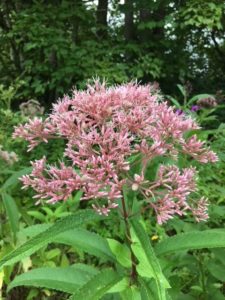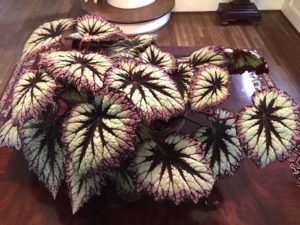
Like an overanxious mother, checking her child’s forehead for a temperature every hour, I’m hovering over my houseplants, checking and rechecking the soil to see if it’s too dry – or too moist. Which just proves the point that people can be neurotic about just about anything.
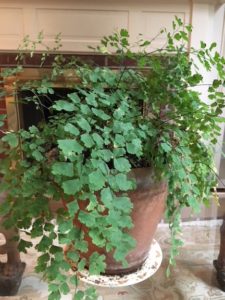
In my own defense, I had just moved all my houseplants from outside (where they had enjoyed 6 or 7 months of sunshine, rain and fresh air) to inside the house where conditions must seem a little dismal. The air in the house is dry, light is limited and conditions are crowded, so no wonder I was concerned about their adjustment!
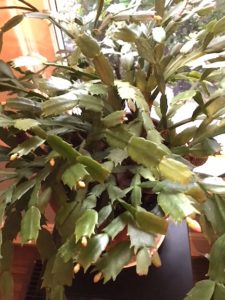
Part (?) of this is all my fault. I used to not like or have any houseplants but over the years I began accumulating plants in pots that couldn’t survive winters outside (i.e. houseplants). They did pretty well for me and last spring, when all these plants were on the front porch, I became so enthused that I lavished care, attention, water and organic fertilizer on my houseplants and guess what? They began to grow and soon filled out their pots. More delighted than realistic, I bought more pots and potting soil, divided and repotted many of my plants and proudly watched as they all flourished. Outside.
It wasn’t until about July that I began to wonder what the heck I was going to do with all these pots (all 45 of them) when the weather cooled. All I have to say is, thank goodness I’m married to a patient and tolerant man, who doesn’t even complain as he pushes aside a jungle of “lucky bamboo” to get to the kitchen sink and dodges stag horn fern fronds and aloe spikes as he walks through rooms with windows.
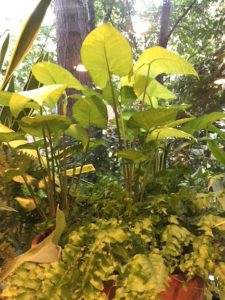
Even I have to admit, it’s a little extreme, though I do have some awesome solutions most of which include building a greenhouse. But for now, I’m just loving being surrounded by green and growing things and putting my hands in dirt every day, even if the dirt is in a pot!

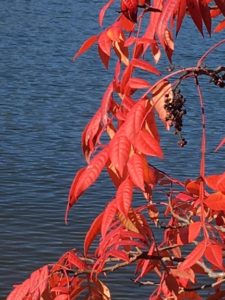
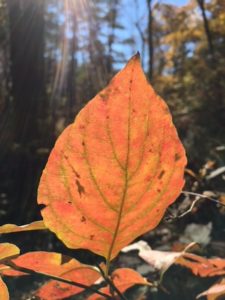

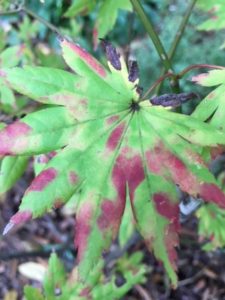
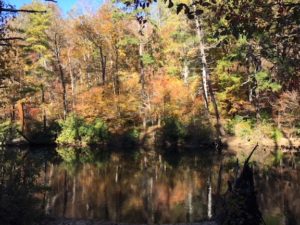
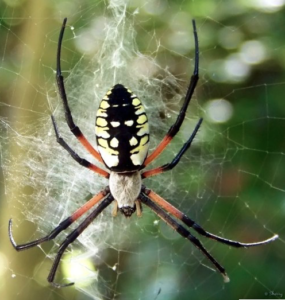 In celebration of Halloween, I’m writing about some of the creepy crawlies around my house and garden, in particular, spiders. This time of year, spiders are abundant as females lay eggs before cold weather settles in for good. Spiders vary tremendously in size and potential danger. Though there are a lot of people who are terrified of all spiders, for the most part, the common spiders in our area will not cause any serious harm.
In celebration of Halloween, I’m writing about some of the creepy crawlies around my house and garden, in particular, spiders. This time of year, spiders are abundant as females lay eggs before cold weather settles in for good. Spiders vary tremendously in size and potential danger. Though there are a lot of people who are terrified of all spiders, for the most part, the common spiders in our area will not cause any serious harm.
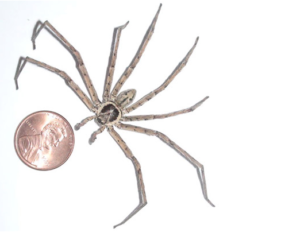
 Sometimes the best part of a major project is finishing it. Sometimes it’s what happens in the process and so it was with the “1,000 brownie challenge“. My 11 year old grandson, Rivers, decided in July that he wanted to make 1000 brownies for “people who serve our community and for people who never get home baked goods.” I thought it was an excellent community service project and promised to help him achieve his goal.
Sometimes the best part of a major project is finishing it. Sometimes it’s what happens in the process and so it was with the “1,000 brownie challenge“. My 11 year old grandson, Rivers, decided in July that he wanted to make 1000 brownies for “people who serve our community and for people who never get home baked goods.” I thought it was an excellent community service project and promised to help him achieve his goal.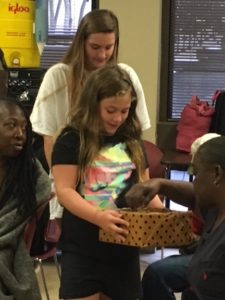
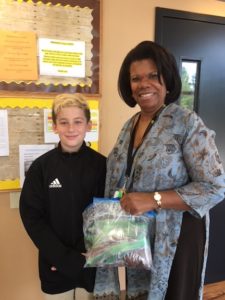


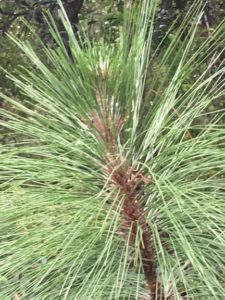 Long-leaf pines, Pinus palustris, are among the most beautiful, important and threatened of all southern trees. At one time long leaf pine ecosystems covered the southeastern United States, roughly 90 million acres. Today, a mere 3 1/2 million acres persist, mostly in South Georgia, Alabama and northern Florida.
Long-leaf pines, Pinus palustris, are among the most beautiful, important and threatened of all southern trees. At one time long leaf pine ecosystems covered the southeastern United States, roughly 90 million acres. Today, a mere 3 1/2 million acres persist, mostly in South Georgia, Alabama and northern Florida.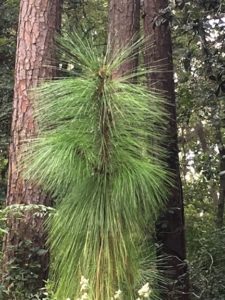
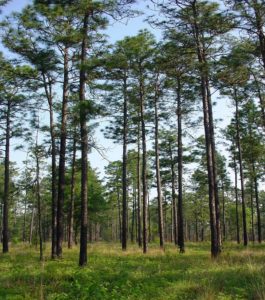 So who needs long leaf pines? The U.S. Fish and Wildlife Service estimates that over 100 different species coexist in these ecosystems, making it one of the most diverse in the world. Today, long leaf pine forests support thirty species that are considered endangered or threatened. In addition, long leaf pines have the capacity to “clean the air” by absorbing harmful carbon pollution from the atmosphere.
So who needs long leaf pines? The U.S. Fish and Wildlife Service estimates that over 100 different species coexist in these ecosystems, making it one of the most diverse in the world. Today, long leaf pine forests support thirty species that are considered endangered or threatened. In addition, long leaf pines have the capacity to “clean the air” by absorbing harmful carbon pollution from the atmosphere.
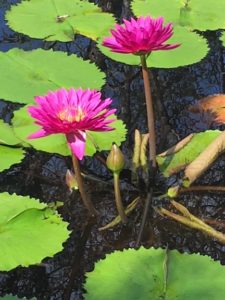
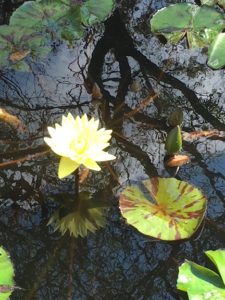
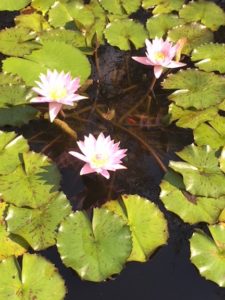 The most common waterlily in our part of the world is the North American white water lily, Nymphaea odorata. This is a hardy water lily and generally blooms from May through September. As cold weather approaches, it goes into a dormant state and sinks to the bottom of the pool or pond. If you use this in a water garden, be careful that you don’t plant it where the water spills into ponds, lakes, creeks or other natural water system as it can become invasive. When water lilies cover too much of a water system, they shade out the sun, creating water that is too cold for many native plants and fish.
The most common waterlily in our part of the world is the North American white water lily, Nymphaea odorata. This is a hardy water lily and generally blooms from May through September. As cold weather approaches, it goes into a dormant state and sinks to the bottom of the pool or pond. If you use this in a water garden, be careful that you don’t plant it where the water spills into ponds, lakes, creeks or other natural water system as it can become invasive. When water lilies cover too much of a water system, they shade out the sun, creating water that is too cold for many native plants and fish.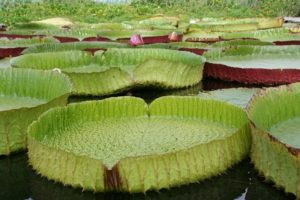 Probably the most interesting water lily is Victoria amazonia, named for Queen Victoria in 1837. Originally found growing in Bolivia in 1801, it is a remarkable plant. The leaves can grow up to 6 feet across and are composed of a series of ribs and air pockets, making each leaf surprisingly buoyant and strong. It is said that a leaf can support up to about 66 pounds.
Probably the most interesting water lily is Victoria amazonia, named for Queen Victoria in 1837. Originally found growing in Bolivia in 1801, it is a remarkable plant. The leaves can grow up to 6 feet across and are composed of a series of ribs and air pockets, making each leaf surprisingly buoyant and strong. It is said that a leaf can support up to about 66 pounds.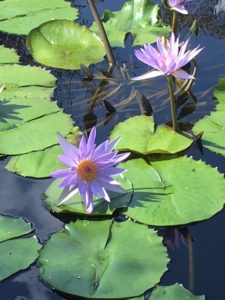
 Have you ever noticed? People “grab” a drink at the end of the day, or “run out” for a cup of coffee but always “meet” for a cup of tea. Tea, the most consumed beverage in the world (other than water) has always been surrounded by a mystical aura. My fascination with tea is decades old and resulted in my writing and publishing the book, Tea, The Drink that Changed the World in 2007. I am thrilled to announce that I have just updated this book and it has been reissued by Tuttle Publishing with the new title, A History of Tea, the Life and Times of the World’s Favorite Beverage.
Have you ever noticed? People “grab” a drink at the end of the day, or “run out” for a cup of coffee but always “meet” for a cup of tea. Tea, the most consumed beverage in the world (other than water) has always been surrounded by a mystical aura. My fascination with tea is decades old and resulted in my writing and publishing the book, Tea, The Drink that Changed the World in 2007. I am thrilled to announce that I have just updated this book and it has been reissued by Tuttle Publishing with the new title, A History of Tea, the Life and Times of the World’s Favorite Beverage.
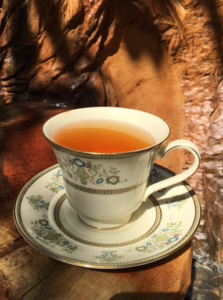
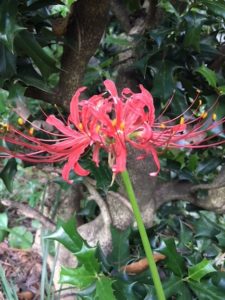 I found Naked Ladies in my garden – but not in the Virgin’s Bower. I offered them Ladies’ Slippers and Blue Bonnets and even Indian Blankets! but they just shook their petals and said they were waiting for Bachelor Buttons.
I found Naked Ladies in my garden – but not in the Virgin’s Bower. I offered them Ladies’ Slippers and Blue Bonnets and even Indian Blankets! but they just shook their petals and said they were waiting for Bachelor Buttons.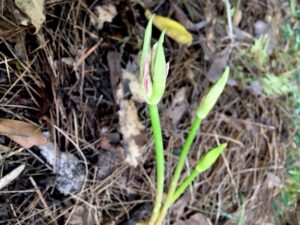
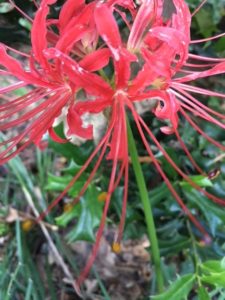
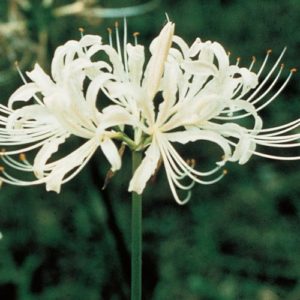
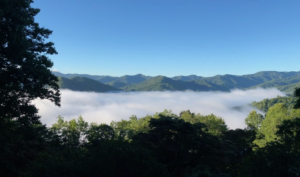 Last weekend all the grownups in our family (except for the ones in Oregon and China) went to western North Carolina to stay at the incomparable Snowbird Lodge. I love my grandchildren without measure, but it was lovely to spend some adult time with our grown children. What treasures!
Last weekend all the grownups in our family (except for the ones in Oregon and China) went to western North Carolina to stay at the incomparable Snowbird Lodge. I love my grandchildren without measure, but it was lovely to spend some adult time with our grown children. What treasures!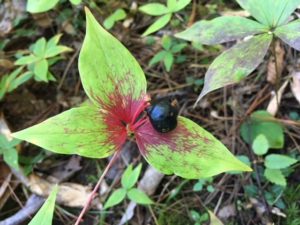
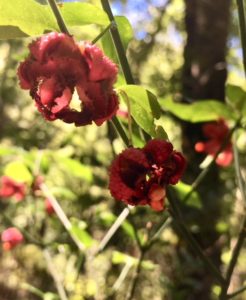
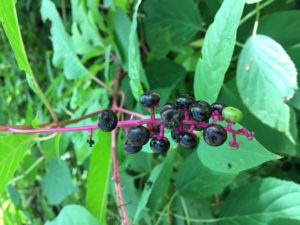
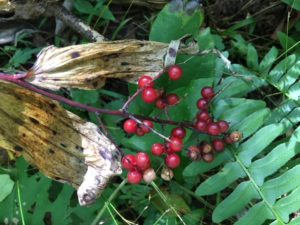
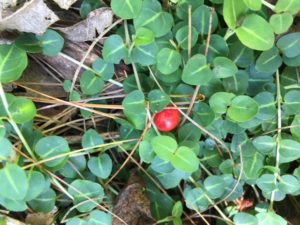
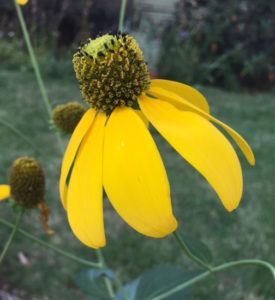
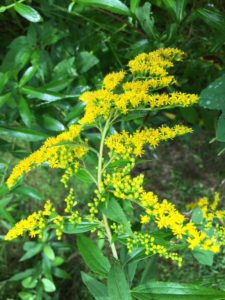
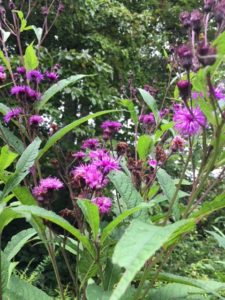 Ironweed is easily identified by its profusion of rich, magenta flowers. These plants bloom along southern roadsides from August through October. Ironweed was also valued for its medicinal qualities, particularly by the Cherokees. Both the leaves and roots were used, most often in a tea given during pregnancy and childbirth. The tea was also given to those suffering from stomach ulcers.
Ironweed is easily identified by its profusion of rich, magenta flowers. These plants bloom along southern roadsides from August through October. Ironweed was also valued for its medicinal qualities, particularly by the Cherokees. Both the leaves and roots were used, most often in a tea given during pregnancy and childbirth. The tea was also given to those suffering from stomach ulcers.